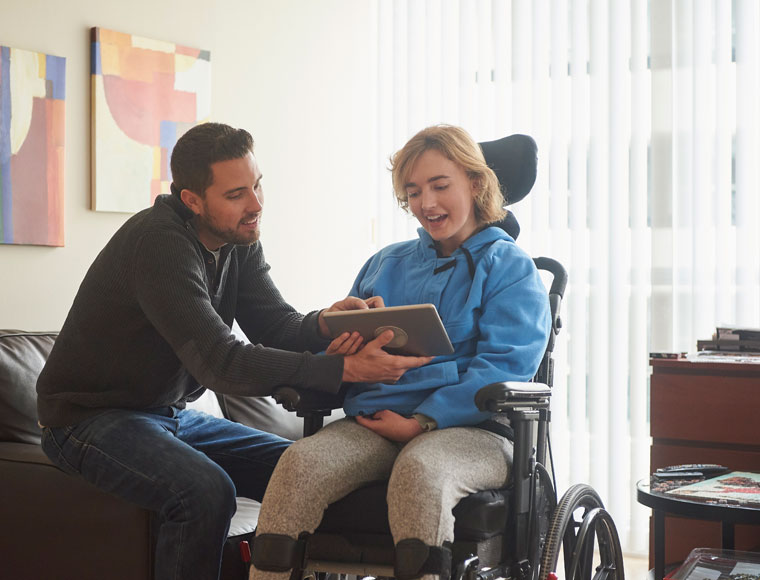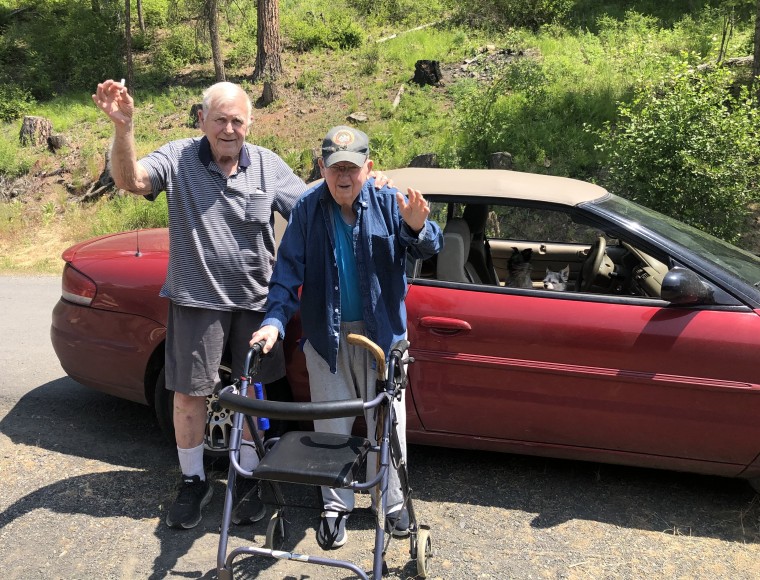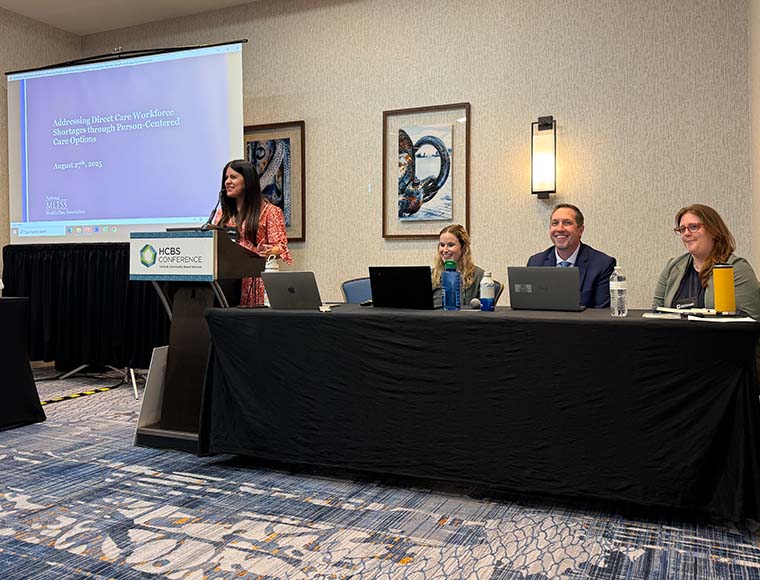Initial assessment
From the outset of a referral to the Employment and Community First CHOICES program, information is gathered about maladaptive behaviors. If there is any indication of a history of, or the presence of current maladaptive behaviors, the SC invites the LTSS BA to join the first face-to-face visit with the individual and their caregivers. Even if it is evident that the individual will not qualify for Employment and Community First CHOICES due to insufficient evidence or documentation regarding intellectual or developmental disabilities, the LTSS BA is available to provide information about other resources and benefits that are available to meet the individual’s needs. This proactive approach is one of the hallmarks of the UnitedHealthcare Enhanced Support Coordination Model.
The LTSS BA is responsible for completing the initial behavior assessment for individuals referred to the Employment and Community First CHOICES program. This initial assessment is required by TennCare and it is useful to have a clinician, such as the LTSS BA, available to complete the behavior assessment as soon as possible in order for the appropriate behavior supports to be identified, such as ABA, and implemented proactively. By doing so, a quick and seamless transition into services can be facilitated, whether those services are provided in the individual’s home or in a community-based residential setting.
During the initial behavior assessment, if it is evident that the individual needs a long-term behavior intervention, such as ABA services, the LTSS BA begins the process of locating a permanent provider to provide these services. This is another great benefit of the LTSS BA role as this task can be arduous and time-consuming. Because the LTSS BA has formed relationships with ABA providers throughout the state, their knowledge and relationships help facilitate timelier identification of this needed support. When an ABA provider cannot be immediately engaged, and if the individual is not in danger of being placed into a higher level of care due to current behaviors determined by the assessment, the LTSS BA will provide general training to caregivers and/or the DSPs supporting the individuals on basic ABA strategies. The LTSS BA maintains communication with the DSPs and caregivers to ensure that the individual is responding to these strategies and that their behaviors are not escalating to the point of needing more support. The LTSS BA is also prepared and able to provide individualized, direct training to caregivers and DSPs, as warranted.
There are even times when an initial assessment completed by the LTSS BA provides evidence that, though an individual does not meet criteria for traditional ABA services, they exhibit some level of behavior that needs to be addressed. In these instances, the LTSS BA is able to provide individualized training for families and DSPs as well as work in a limited capacity with the individual to address their behaviors. This proactive support can prevent the individual’s behavior from escalating to a point where greater intervention, such as an in-home ABA program, is warranted. It can also facilitate a greater opportunity for the individual to obtain a job or more fully integrate into their community.
Training support
When training is provided in a natural setting, whether in an individual’s home or a community setting, these in-the-moment training sessions are particularly helpful because the LTSS BA can work directly with the individual while also explaining and modeling strategies for caregivers and/or the DSPs. Our experience with the LTSS BA providing timely training indicates that the more engaged and knowledgeable family caregivers and staff are, the faster individuals can learn to manage their maladaptive behaviors and move closer toward independence at home and in the community. The LTSS BAs have also observed that when DSPs correctly follow behavior management protocols, behaviors can be significantly reduced. In just over two years of having the LTSS BA team in place, we have documented that in some instances by the time a permanent ABA provider is engaged, the individual’s level of behaviors has diminished to the point that he or she no longer qualifies for ABA services.
Given the flexible nature of the LTSS BA role, training support can also be provided in other settings in order to support all who interact with the individual. For example, in cases where the individual is a minor, the LTSS BA can attend Individualized Education Program (IEP) meetings and provide training to school personnel at the same time, when permitted. Collaboration between school and home settings can be integral to behavior change. Although many schools do not allow Behavior Analysts into their classrooms, the LTSS BAs can reach out to develop a relationship with the school serving the individual. If in-school trainings are not permissible, the LTSS BA can work in partnership with school behavior personnel to discuss strategies that can be used both at school and at home. Another example of this level of important collaboration occurs when an individual prepares to enter a job placement. For these individuals, an LTSS BA can support their job coaches with training as well. The LTSS BA is able to train employment staff in basic ABA strategies as well as strategies individualized to the employee. This synergy can allow for consistent interventions to be used across settings, increasing the likelihood of positive behavior change.
Behavior support plan
Completion of the behavior assessment and training are two types of support that are provided by the LTSS BA. However, as noted earlier, there is currently a shortage of BCBAs to provide in-home ABA interventions for individuals with I/DD. The LTSS BA is critical to providing needed support in real time, including the development of an Interim Behavior Support Plan.
An Interim Behavior Support Plan can prevent an individual’s disruption from their current placement, can divert an individual from a higher level of care, or can facilitate a successful transition from one setting to another. When the initial assessment provides evidence that an individual is in critical need of behavior services prior to the time when a permanent ABA provider can begin services, the LTSS BA’s ability to initiate an Interim Behavior Support Plan is critical to maintaining and preventing their behavior from escalating. LTSS BAs begin training caregivers and DSPs on the Interim Behavior Support Plan as soon as possible so that strategies and interventions can be implemented quickly to maintain an individual’s stability. The LTSS BA also will regularly monitor and provide ongoing support and training related to the Interim Behavior Support Plan until a permanent ABA provider is in place.
Discharge planning and transition
The LTSS BA is generally also involved in discharge planning, including training staff or family caregivers on strategies to support an individual with I/DD as they leave a highly structured setting to transition back home or to a new community-based placement such as a Community Living Support (CLS) housing option. Transitions, especially from a higher level of care to a community placement, can be a particularly challenging experience for individuals with I/DD. Given the flexible nature of the LTSS BA position, they are able to support facilities, the receiving provider agency and their staff, and/or family members on both sides of the transition process. Because transitions can be especially difficult for individuals with I/DD, planning proactively to address behavior challenges is vital to their successful transition.











